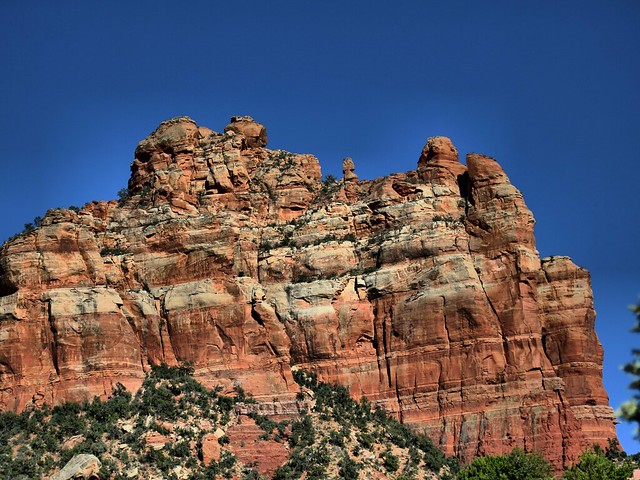We continued our twelve day multi-generational journey in a 31 foot RV from Sedona to the south rim of the Grand Canyon, an easy 120 mile drive that took less than three hours. Near the entrance to the National Park, our granddaughters were excited to see an Elk grazing along the road.
After securing our rig in an ideal location at the north end of Grand Canyon Trailer Village, we wasted no time taking the ten minute walk to the Visitor Center at the very edge of the Canyon. The children wanted to see the IMax introductory film, but the projector was broken. We talked to a Park Ranger who told us that California Condors had been reported at Hopi Point, so we planned a visit for the next day. We lingered at the South Rim to observe sunset from nearby Mather Point.
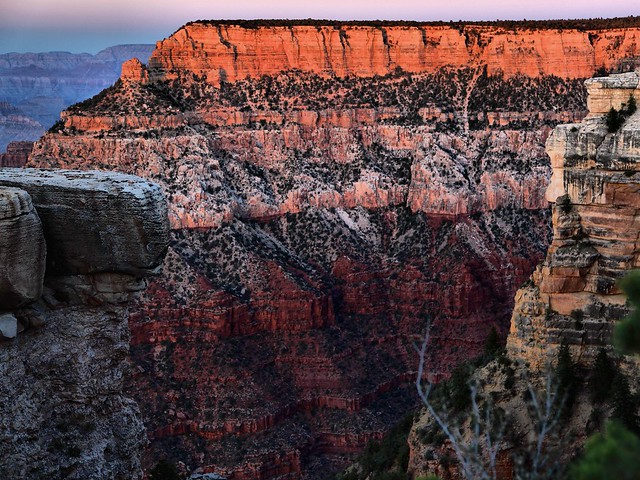
The ever-changing play of colors on the rocks to the east was beautiful, but the clear sky to the west plunged the foreground into shadow and lacked the interest that would have been provided by a few clouds. When the sun went down it was as if someone had simply turned off the lights.
In my haste to eliminate the large number of 25,000 KB RAW outtakes among those that had filled two 32 GB compact flash cards, I inadvertently deleted that day's only bird photos, of two Scrub Jays that posed in a dead tree near the Visitor Center.
The next morning I set out on my first walk in the woods adjacent to our RV. The first bird I saw bears a close resemblance to the Boat-tailed Grackle, a Florida species. It is a Great-tailed Grackle, feasting on a pine nut.
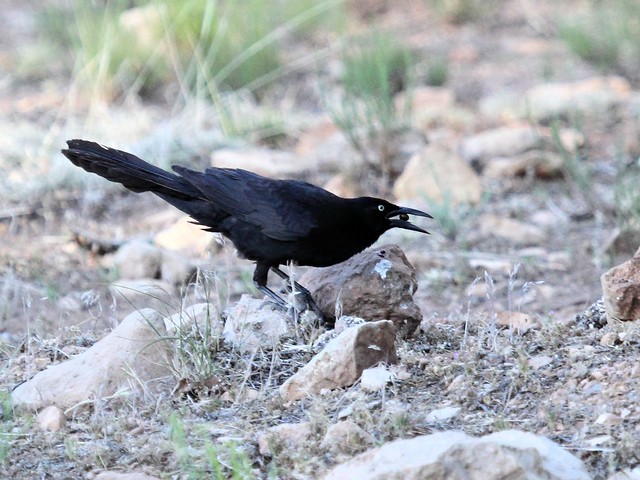
I walked a more few yards, passing a staff parking lot when I realized that a very large (12-point) bull Elk was staring me right in the face. A second smaller one was just behind him. I froze and snapped a few shots, then they both ignored me, moved along the edge of the lot and resumed browsing on tree branches. Soon, a third bull joined them.
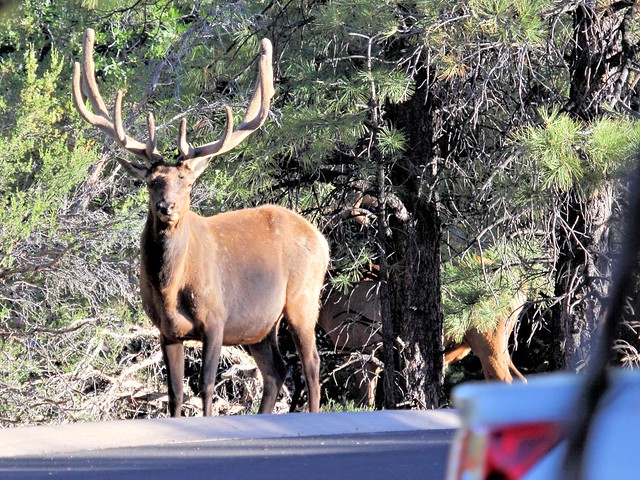

I continued down a dirt path through the mixed pinyon-juniper and Ponderosa Pine woodland, keeping an eye on the Elk who followed me erratically among the trees along the path.
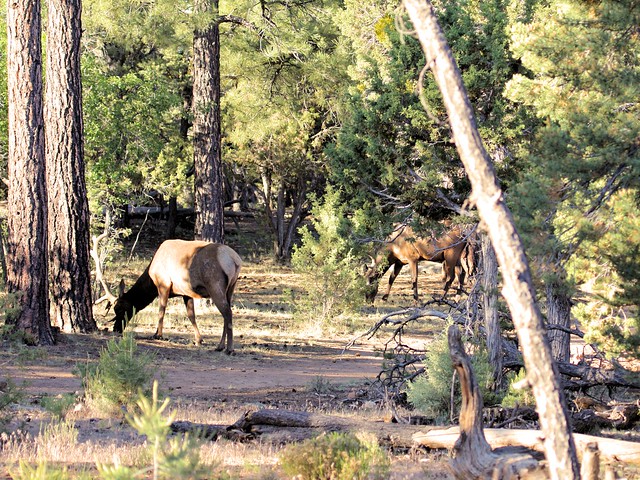 Our camp was at about 7000 feet elevation. Although nighttime temperatures had dropped into the high 30s (F), the sun was quickly warming me up, and I stood silently for a while in the shade of a thicket of Pinyon Pines. Suddenly, I was surrounded by the wheezy squeeze-toy calls of a flock of a dozen or more Pygmy Nuthatches.
Our camp was at about 7000 feet elevation. Although nighttime temperatures had dropped into the high 30s (F), the sun was quickly warming me up, and I stood silently for a while in the shade of a thicket of Pinyon Pines. Suddenly, I was surrounded by the wheezy squeeze-toy calls of a flock of a dozen or more Pygmy Nuthatches.
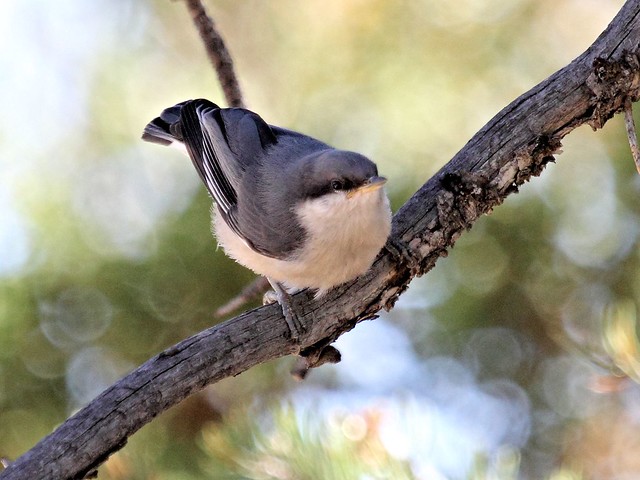
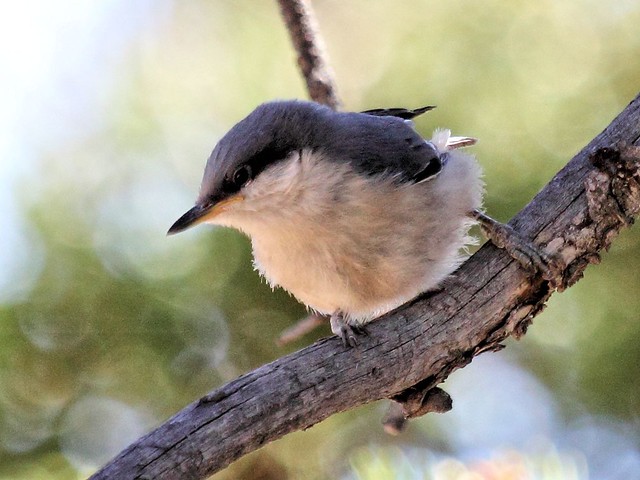
The nuthatch calls seemed to attract a few hummingbirds. From the cricket-chirp sound of their wingbeats I could tell that one or more were Broad-tailed Hummingbirds. However I think this one represented the Black-chinned species.
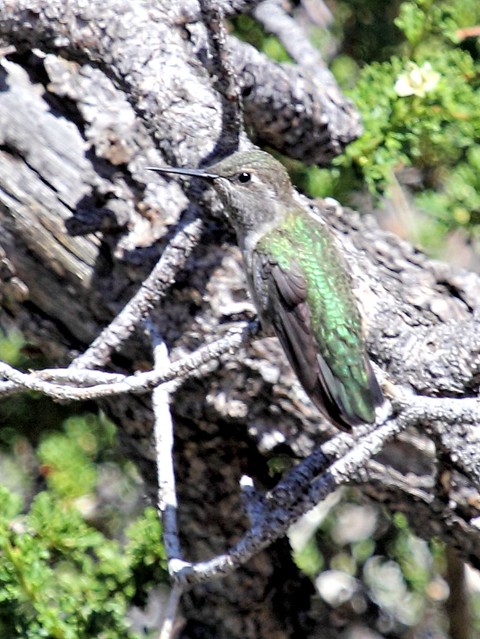
An Ash-throated Flycatcher also responded to the commotion.
 A harsh, strident call revealed the presence of a Steller's Jay.
A harsh, strident call revealed the presence of a Steller's Jay.
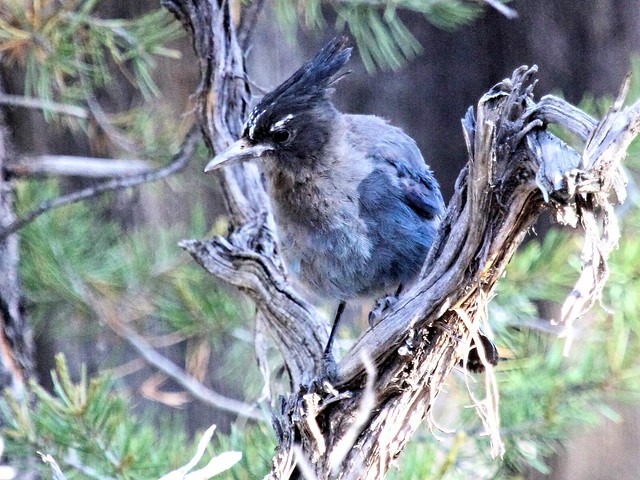
The pattern of white stripes on the Steller Jay's head varies gradually, being more sharply defined in the eastern part of its range and absent from birds in the northwestern US.
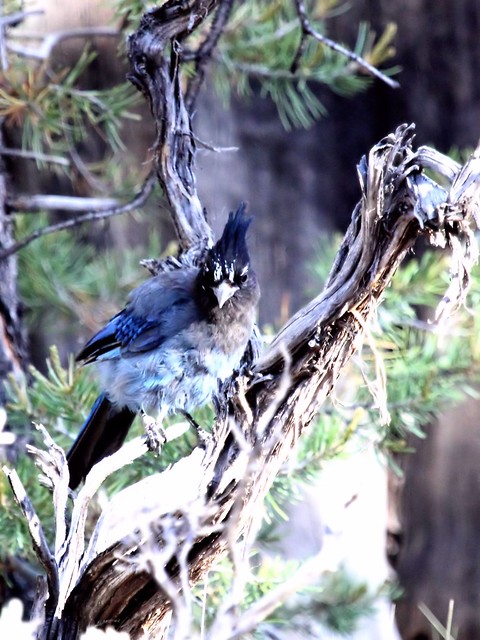
Mountain Chickadees appeared, as if out of nowhere.
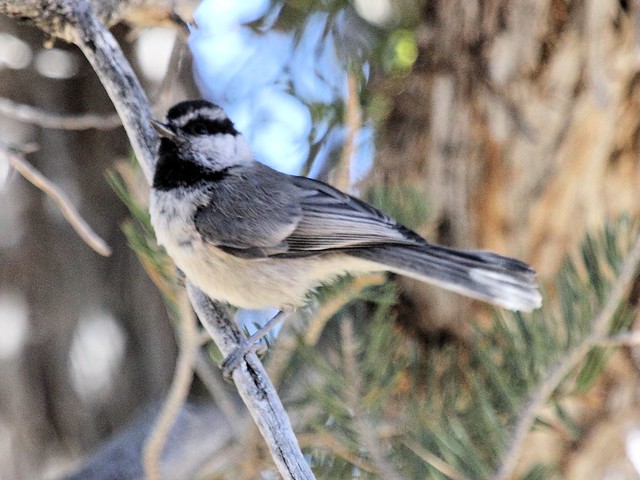
On the way back to the RV, I did not see the Elk again, but a Violet-green Swallow roosted in a tree just long enough for me to take its picture.

A shadow of a large bird passed overhead and I looked up casually, ready to dismiss it as a Turkey Vulture. But no-- it had a white band on its tail. It was a Zone-tailed Hawk, known for its ability to hide in a flock of Turkey Vultures, making it easier to surprise smaller birds, mammals and lizards that constitute its prey.
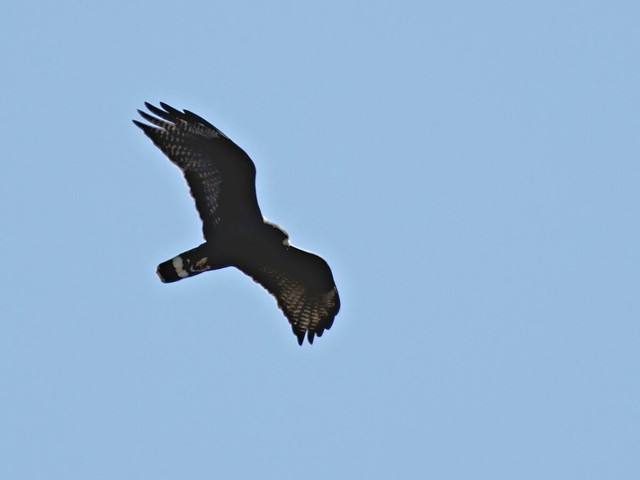
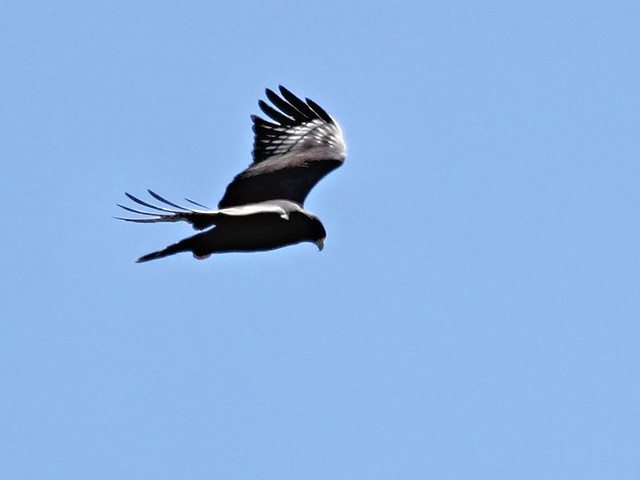
Our granddaughter Graciela has already stolen my thunder by writing about what happened just a bit later that morning, so I will stop here!
This post continues with the theme of remembering the birds that have now vanished from our Illinois "back yard" because of the grading, filling of low spots and construction. I plan to illustrate them one species at a time in "Crops and Clips."
While the new condos were being built, Spotted Sandpipers continued to breed in a small patch of undisturbed grass. You can hear their cries in the background of the video clip I captured when the Sandhill Cranes' territory or nest was disturbed by the earth moving machinery. The sandpiper also has vanished along with the cranes.
Putting things into perspective, Illinois is the "Prairie State" and boasts many extensive forest and prairie preserves. The loss of this little patch to a long-planned human development seems insignificant in the great scheme of things. Since birds can fly, they are able to seek out new breeding grounds. However, terrestrial creatures such as voles, snakes, rabbits and the muskrats that lived in the single perennial wet area that is now gone are more adversely affected. Any potential new habitat is fragmented and separated by barriers such as roads, buildings and cornfields.
Before the onset of construction, aside from the poles that marked the utilities and the mound of topsoil that was home to the cranes, dump piles of concrete debris were the only elevated locations. They attracted meadowlarks, several sparrow species, pipits and Horned Larks. The piles were conveniently located along the roads, making it easy for me to use the car as a blind and set up my shots in perfect light.
This Spotted Sandpiper suddenly displaced a meadowlark I was photographing on one of the broken slabs.
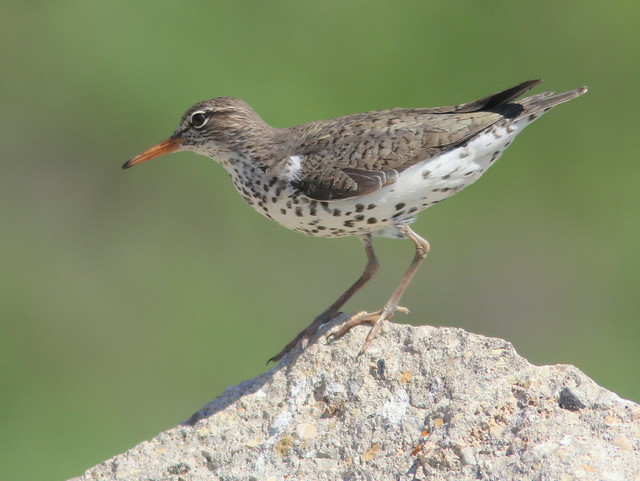
Never before had I been so close to a Spotted Sandpiper. Was it just visiting?
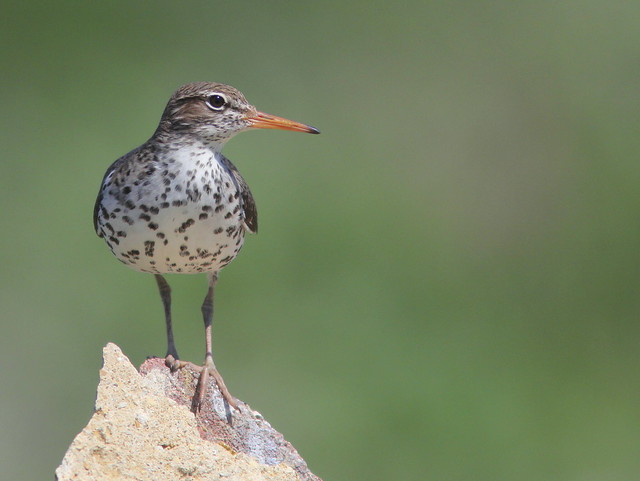
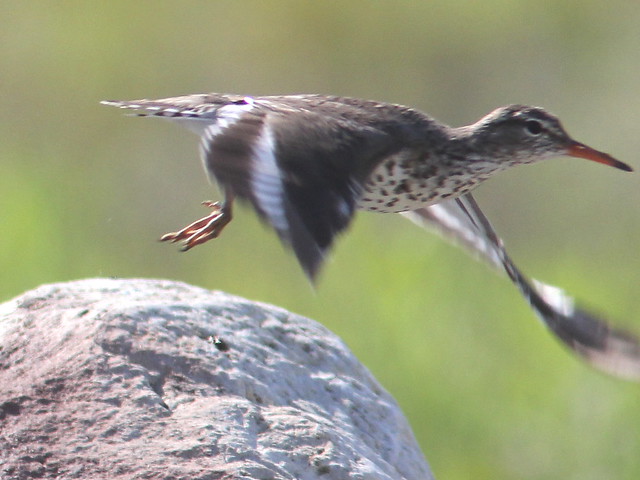
Another surprised me by bursting into song. I realized that I had been ignoring this sound, perhaps interperting it as a variant of a Killdeer's call. Hear its songs and calls at this link.

There was very little water nearby, but the sandpipers often foraged in puddles created by rainwater (called "floodles" by local birders). One such depression was deep enough to stay wet throughout most summers.
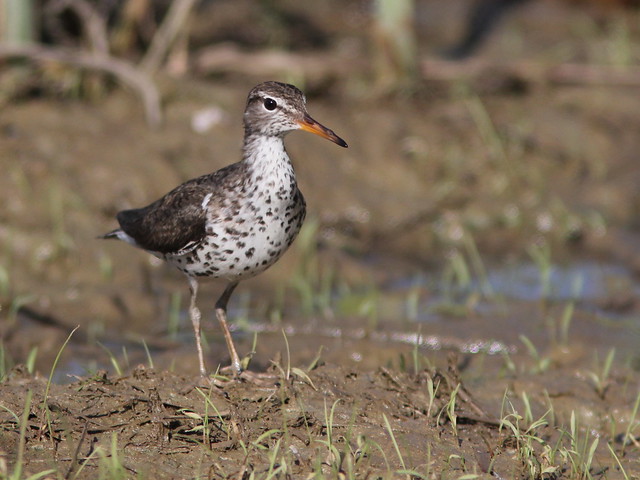
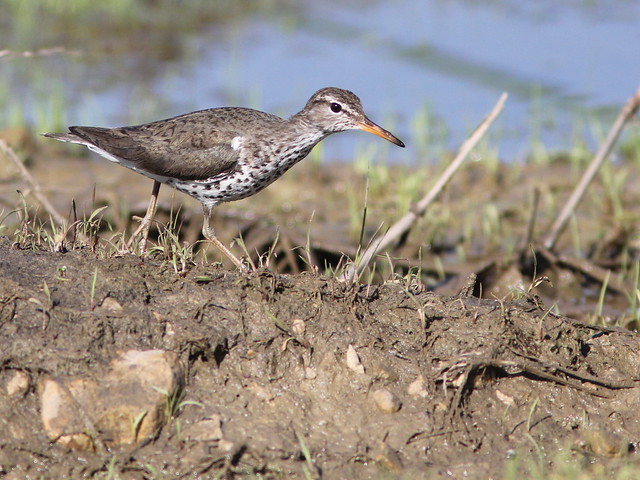
In non-breeding plumage it loses its spots, but the white area in front of the bend in its wing and the white eyebrow help distinguish it from the similar Solitary Sandpiper. (I took this photo in nearby Prairie Green wetlands, Geneva, Illinois).
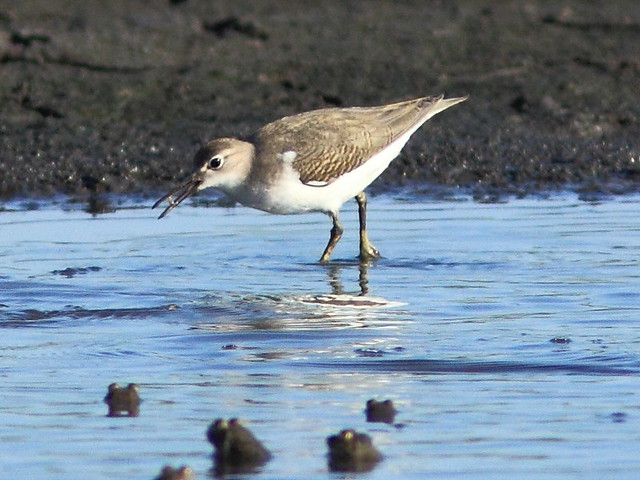 For comparison, here are two Solitary Sandpipers who shared a fluddle with one of the local Spotted Sandpipers. Note their plain face with a bright eye ring and lack of an eye line.
For comparison, here are two Solitary Sandpipers who shared a fluddle with one of the local Spotted Sandpipers. Note their plain face with a bright eye ring and lack of an eye line.
 Shared in The Bird D'Pot
Shared in The Bird D'Pot
Sedona, Arizona, our next objective after departing Tucson, was a 250 mile drive that took us about five hours. On the way, we passed through some breathtaking scenery. The winding road moved along Oak Creek Canyon, which appeared as a lush oasis in an otherwise parched landscape.
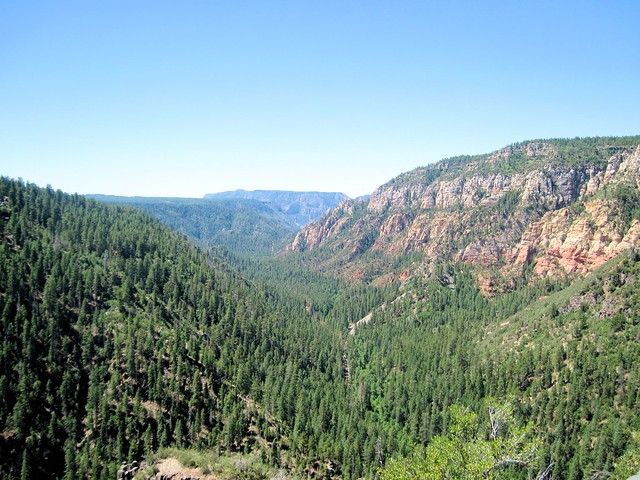
As we approached Sedona, red rocks began to predominate.
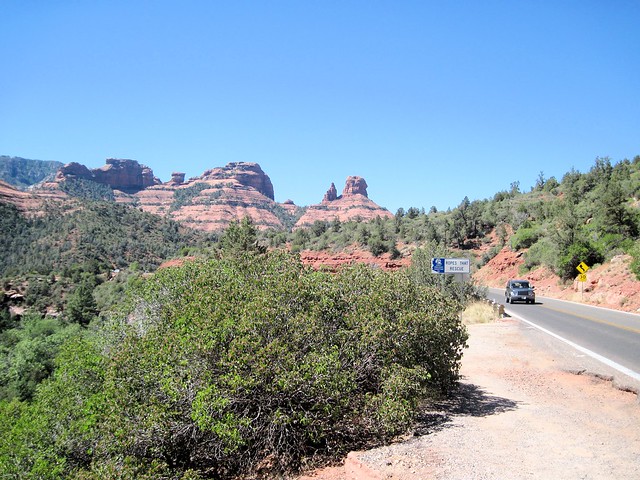
Two horizontal formations, the Schnebly Hill Sandstone and the Hermit Shale layers, up to 270 million years old, are rich in iron oxide that imparts the rust color.
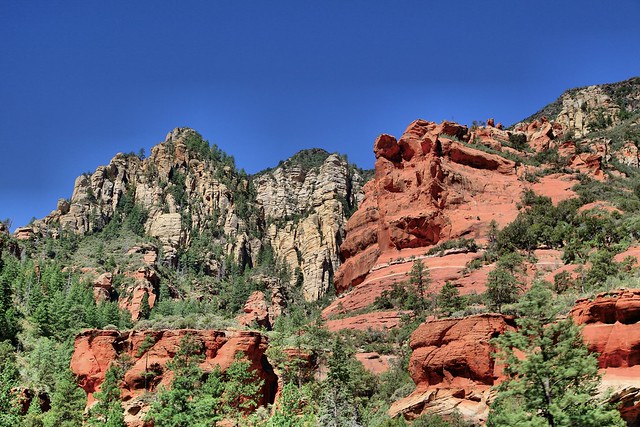
We did not attempt to enter the town, as the streets do not safely accommodate a 31 foot RV. This photo was taken through the windshield as we passed by Sedona.

Our one-night stay at Rancho Sedona RV Park was brief but restful and quite productive. Our space was shaded by tall Sycamore trees, only about 50 yards from Oak Creek. I could hear Bullock's Orioles singing overhead.

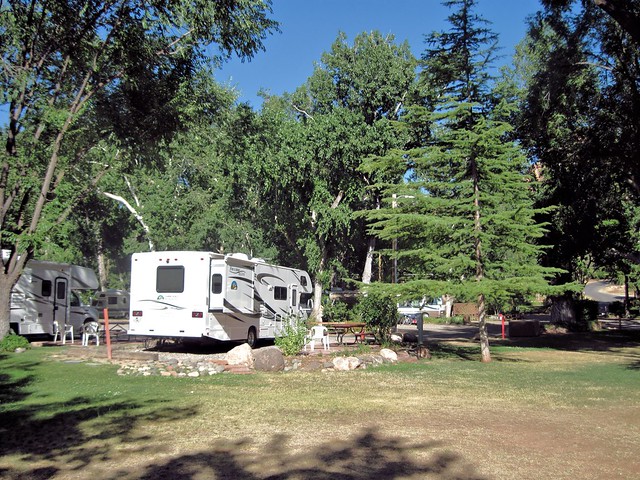
Once the RV was hooked up we all headed for the creek.
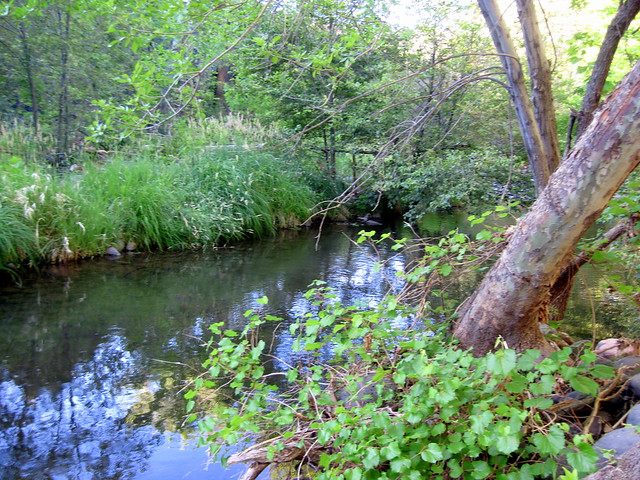
Although I was intent on finding birds, Graci immediately discovered this (presumed) Long-tailed Brush Lizard, which I happily photographed.
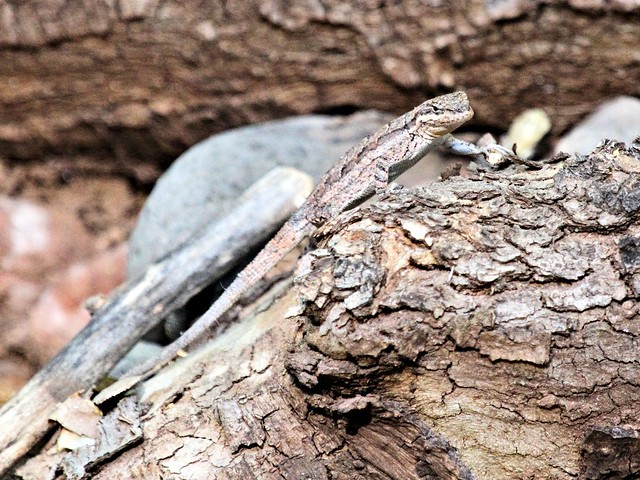
I had high hopes of finding an American Dipper, as I had seen them near here during a prior visit. I focused my attention on the rapids, where I waited for one to suddenly surface.
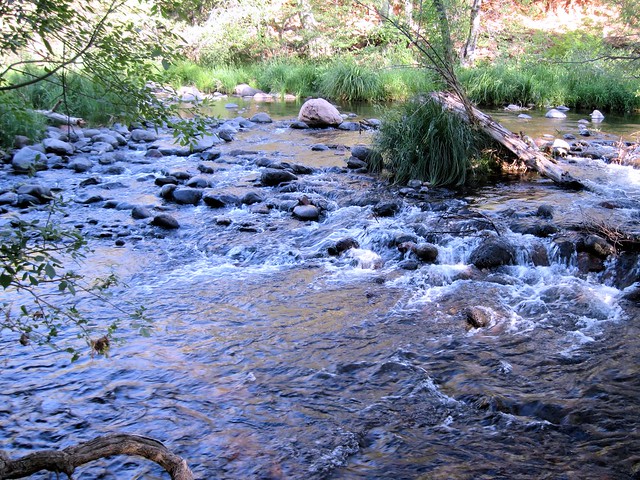
The dipper never showed itself, but a pair of frame-filling Common Mergansers shot the rapids right in front of me.

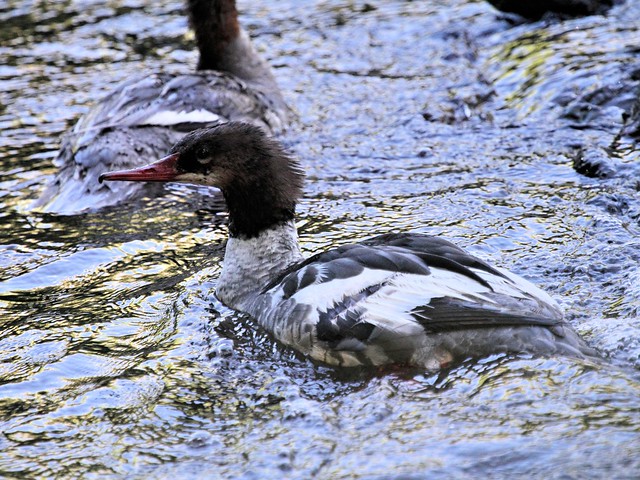
An Ash-throated Flycatcher made hunting forays over the water.
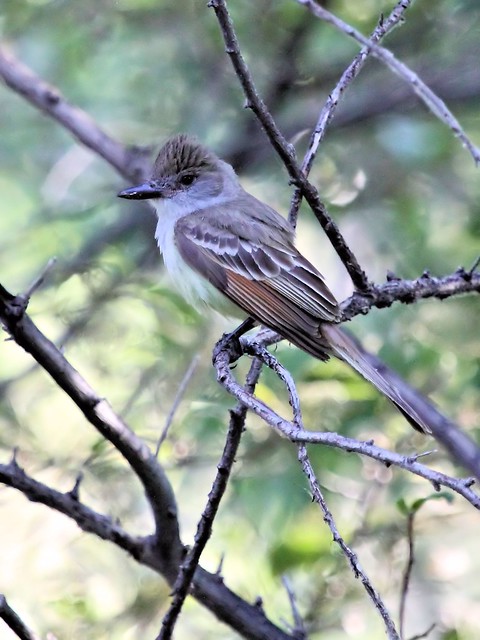
I was delighted to find a family of five Phainopeplas on a tree in the middle of a wide spot in the creek. Members of the Silky Flycatcher family, they hardly ever sat still as they repeatedly took wing to catch flying insects.
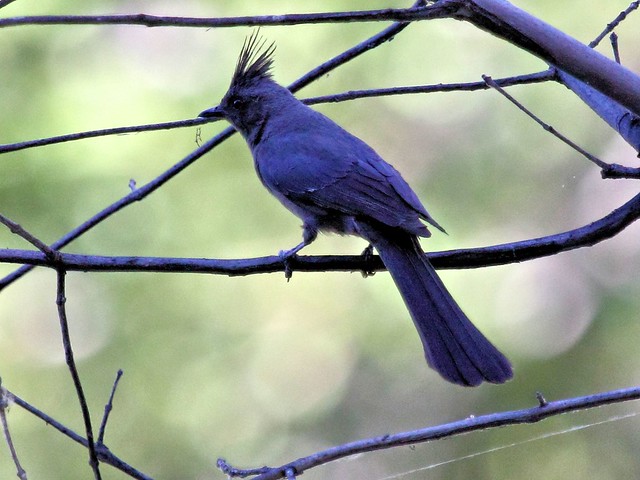
American Robins and a Song Sparrow stopped by for a drink...

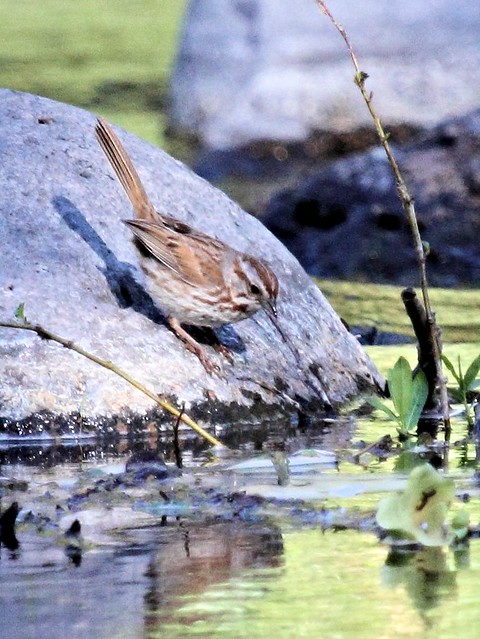
...as did this Gray Squirrel.
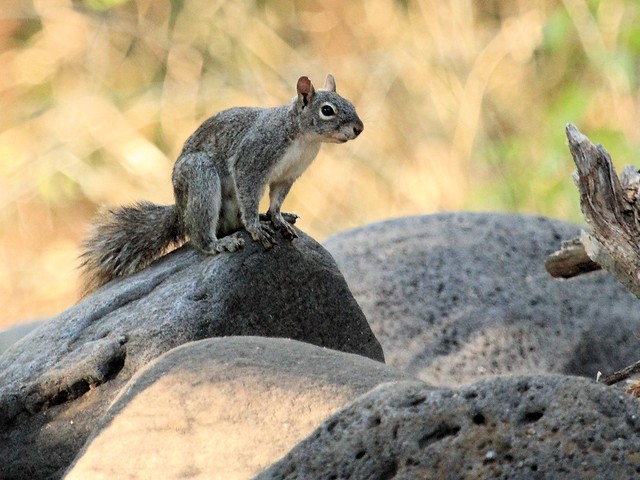
The lawn next to our RV attracted a Black Phoebe...
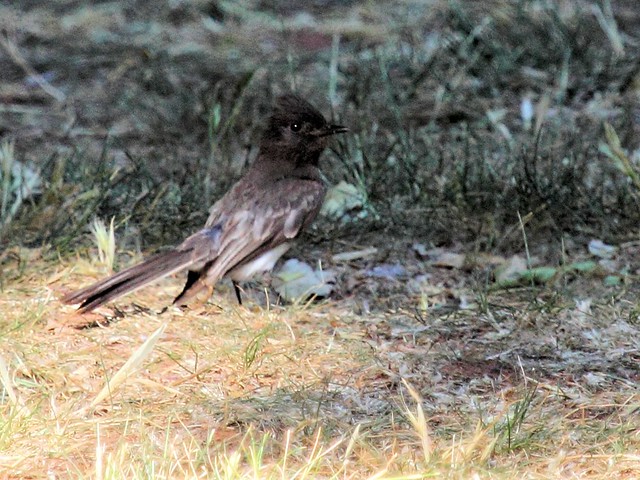
...and a female Bullock's Oriole foraged on the bark of a pine tree.
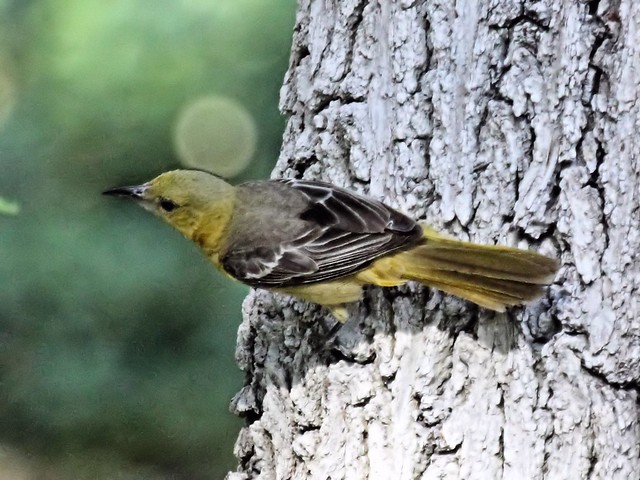
An American Robin showed off his prey in great detail.
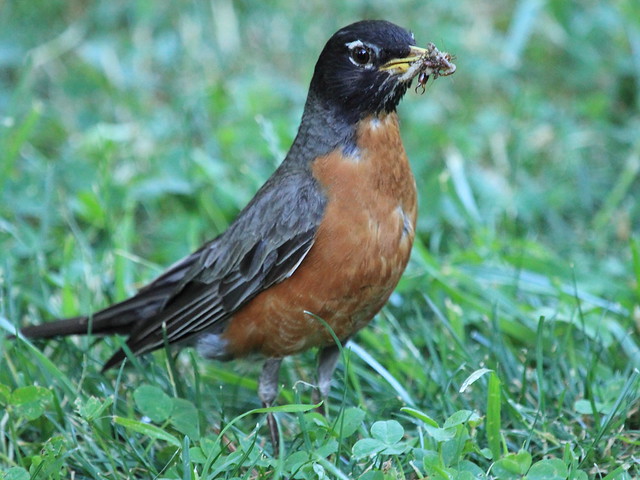
This female Summer Tanager was hunting spiders under one of the electrical supply outlets...
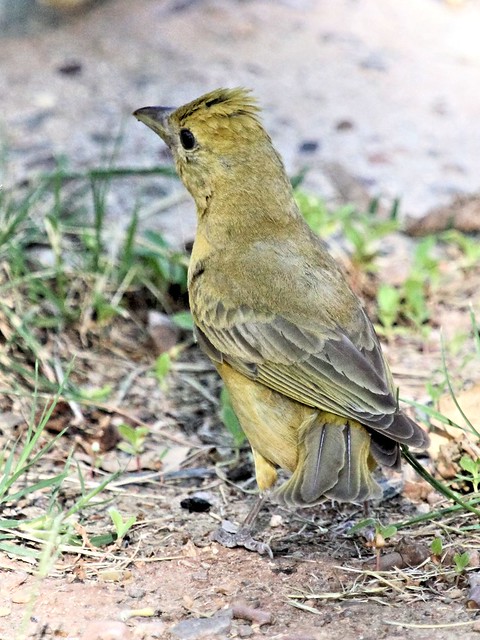
...and suddenly looked up, spider silk dangling from her substantial beak.
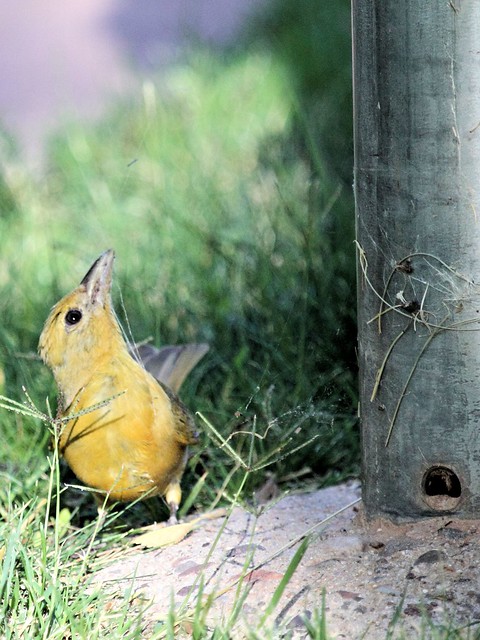
She had found a cafeteria full of spiders!
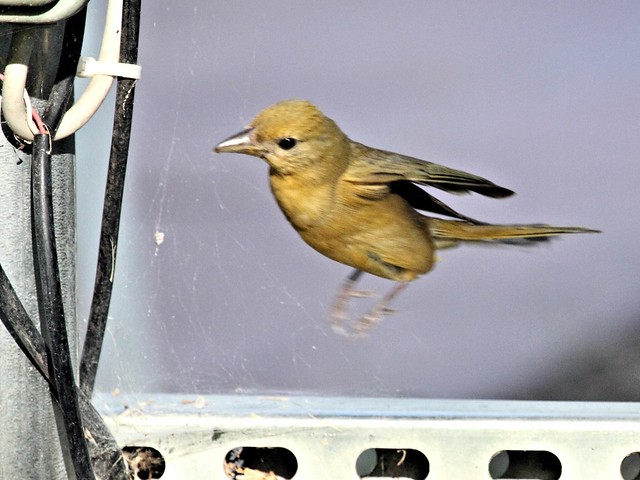
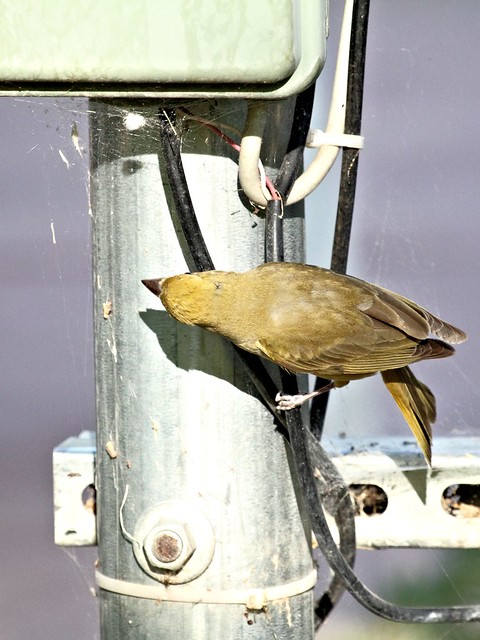
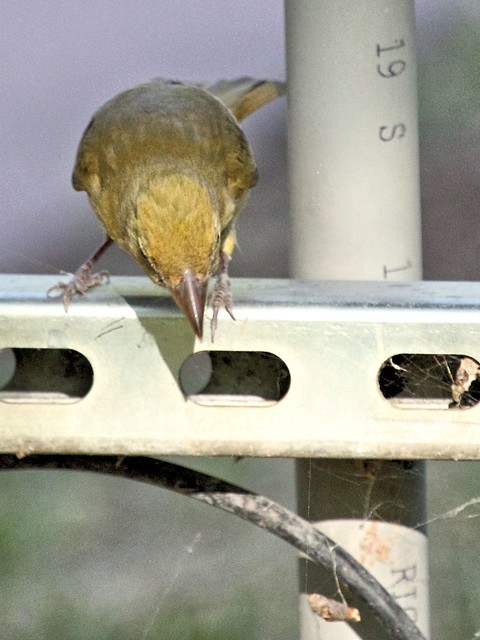
A feeder next to the registration area attracted Lesser Goldfinches and House Finches.
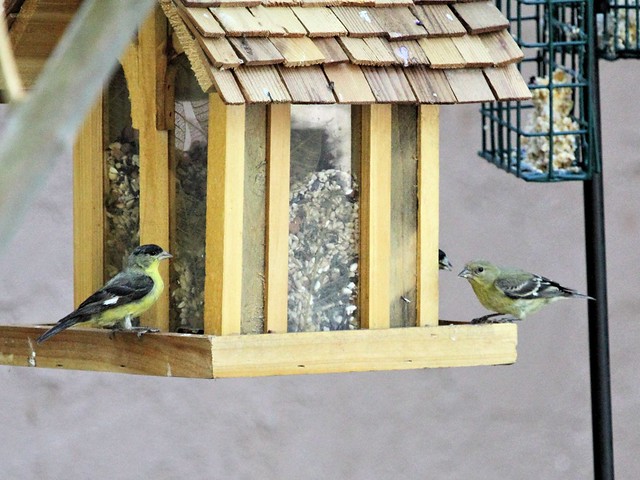
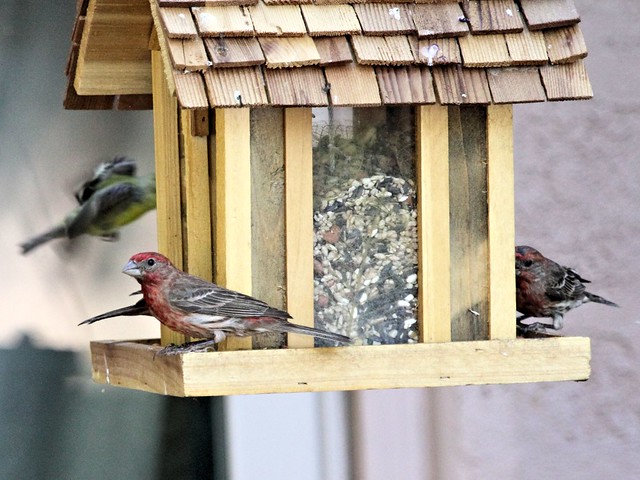
A Bridled Titmouse provided me with my first-ever photo of this species.

One of the staff called me over to see this insect, which looked for all the world like a dead leaf...
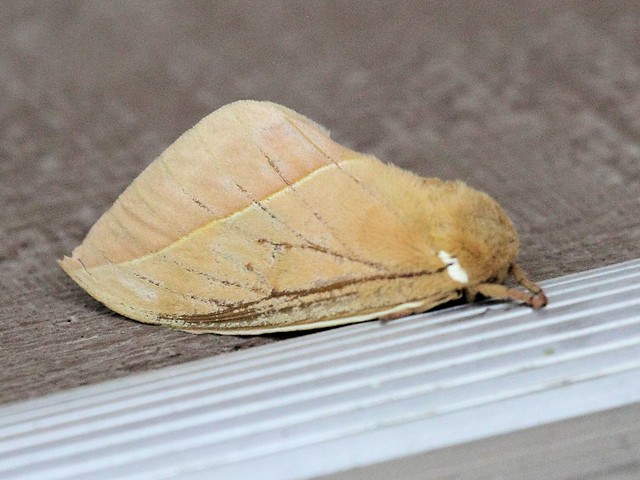
...until it opened its wings to show the brilliant "eye spots" of an Io Moth.

This outcropping came into full view just before we exited the campground on our way to the Grand Canyon. Note the mostly thin white layers of limestone within the red Schnebly Hill sandstone. The latter is said to be entirely devoid of fossils, and there are only few in the limestone, leading to the hypothesis that the limestone layers were mostly windblown as sea levels fluctuated up and down.
